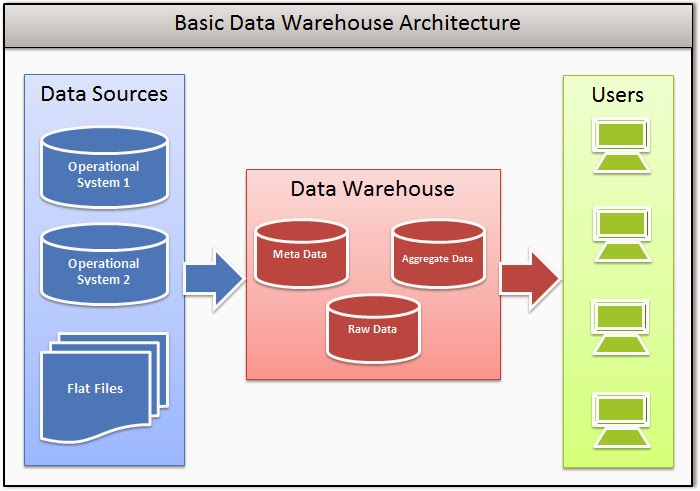Hi All,
I am trying to explain you how to Download, Install and Configure Informatica Power Center 9.x. Please follow the steps one by one, to complete the entire process.
Note: This tutorial and the software is just for learning purpose. Any commercial use may require the respective license from the vendor.
Pre-requisites for the installation
Informatica Power Center Server Installer
Informatica Power Center Client Installer
Any Database installed (Oracle is used for this illustration)
How to download Informatica Power Center Server and Client Installers?
Step 1: Log-on to https://edelivery.oracle.com
Step 2: Select Product Pack and platform as shown below and click Go.
Step 3: Select the Media Pack and click "Continue".
Step 4: Find the download packages as shown below and download it.
How to unpack the download installers?
Unpack the installers as below.
Create Oracle user for Informatica Installation?
In this illustration, oracle is used as the repository database. Please find the screenshots below.
How to install the Informatica Power Center Server?
Find the Server Installer and install it.
Select "Install Informatica" option and click "Next".
Click on "Next".
Select the License Key file and Installation directory.
Click on "Install".
Select Create Domain option, if you are installing in the first node and leave rest of the settings as it is.
Select Database Type as Oracle, provide the Oracle User Name and Password. In the database address section give Machine Name and Port Name (1521 will be the default port for Oracle Database). Test Connection and Click on "Next" to continue.
Machine Name can be viewed in the system properties.
Furnish the Domain Name, Node Name, Domain User Name and Password of your choice and click on "Next".
Uncheck "Run Informatica under a different user account" and click on "Next".
Server Installation has been completed with this.
How to configure Informatica Power Center Server ?
Open the Informatica Power Center Administration Console from the Start Menu.
Log-on to the Informatica Power Center Administration Console
How to create Repository Service?
Select the New Repository as below.
Furnish the Repository Name, select License and Node and click Next.
Furnish the Oracle User Account details that we have created at the beginning. Select "Content exists", if you plan to create the repository contents later or "No content exists" option if you want to create the repository contents as we configure the Repository Service now.
Check "Create Global Repository" option to create a global repository.
Check "Enable version control" option to enable the version control in repository.
Note: Above settings can not be undone.
Click "Finish" to complete the Repository Configuration.
How to create Repository Content?
This step is required only if you have chosen the "Content Exists" option while you configure Repository Service. Otherwise skip this step.
How to change the Repository Operation Mode?
Click on "Edit".
Change Operating Mode to Normal.
Click on "Ok" and it will recycle the Repository service.
How to create new Integration Service?
Select New Integration Service as below.
Furnish the Integration Service Name, Select License and Node and click on "Next".
Furnish the Repository Name, Administration User, Password, Select Data Movement Mode as "ASCII" and click on "Finish" to complete.
Select, do not change any settings in this window and click on "Ok".
Enable the Integration service as below.
And we have successfully completed the Repository and Integration Service configuration.
How to create a User Group?
In the Security Tab, select Create Group. I am trying to create a developer group. So no administration privileges will be given. You can try creating groups with administrator privileges.
Furnish the Group Name.
In the overview window, you can see the users comes under the specified group.
The group privileges can be changed by clicking on the "Edit" button as shown below.
Assign privileges by selecting the respective check boxes and click on "Ok" to save and close.
How to Create User?
Select Create User option.
Furnish User details including password.
Edit option is used to change any details for the user including the password.
Groups tab is used to add the Group for the User.
Privilege Tab is used assign privileges for the user.
Roles Tab is used to assign roles for the user.
Note: The user will be having privilege of User or Group whichever is higher.
How to Manage Permissions?
Select "Permissions" as below.
The below window is used to assign domain permissions for the Users to Groups.
Grant and Revoke buttons serves its purpose.
And we can install Informatica Power Center Client.
How to install the Informatica Power Center Client?
Find the Client Installer and install it.
Select "Install Informatica"
Click on "Next".
Select all check boxes and click on "Next".
Select the directory for client installation.
Click on "Install".
Click on "Done".
The client installation is completed.
How to configure repository in the client tool?
Open any of the client tools from the start menu.
Click on "New" button.
Configure the repository in the client tool by furnishing the server details.
The details can be available from the Administration Console by clicking the Node as shown in the image below.

Select the repository and click on "Ok"
You have done with the configuration.
How to create Informatica Folder?
Open Repository Manager from the Start Menu.
Logon to the Repository Manager
Create folder from the menu as shown below.
Furnish Folder Name.
Change the permissions in the Permissions Tab.
Now we have completed an End to End Informatica Power Center Installation and Configuration. You can start developing mappings and enjoy learning !
Thanks for reading my blog and do like and share if it really helped you.













































































































